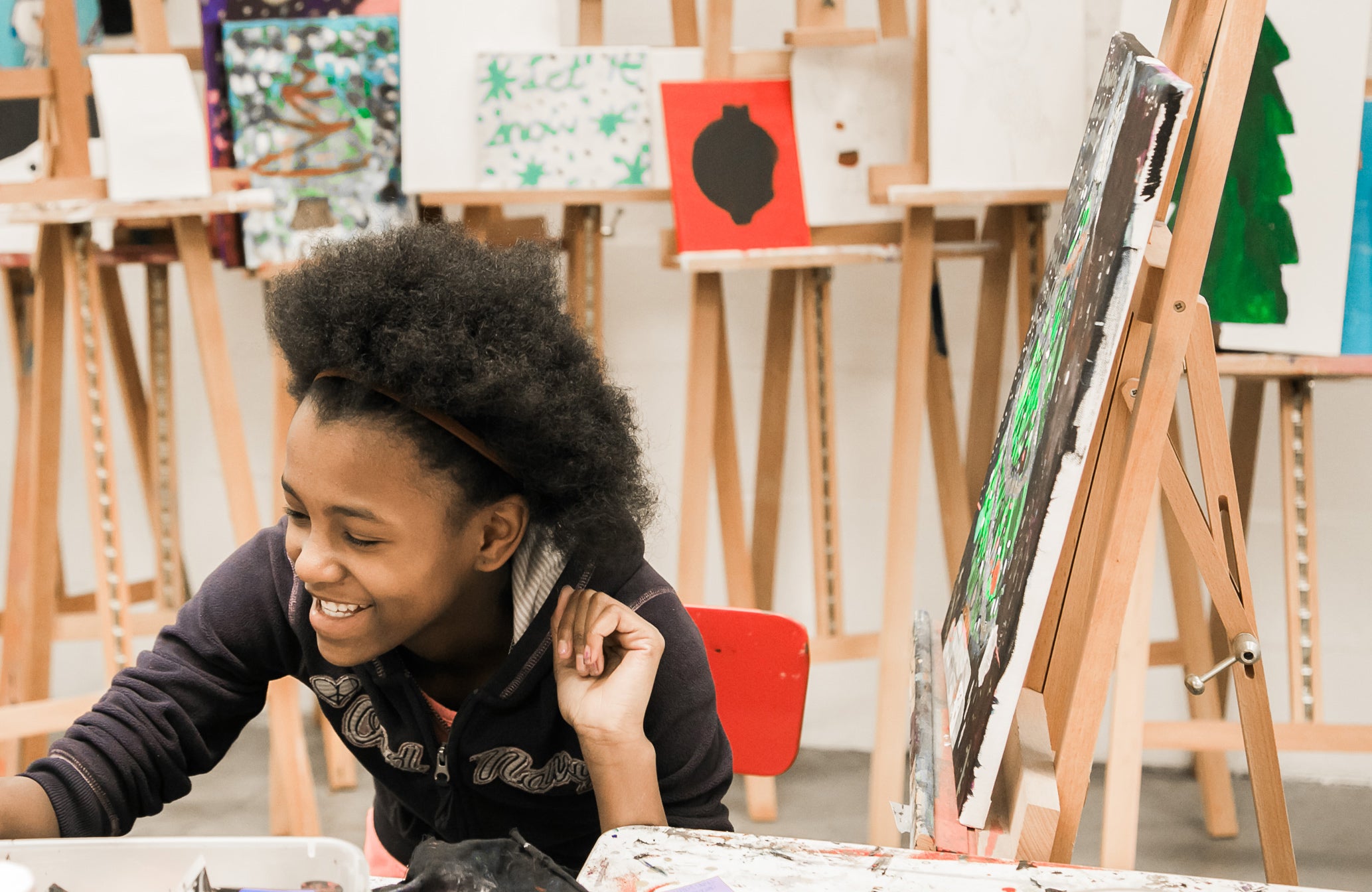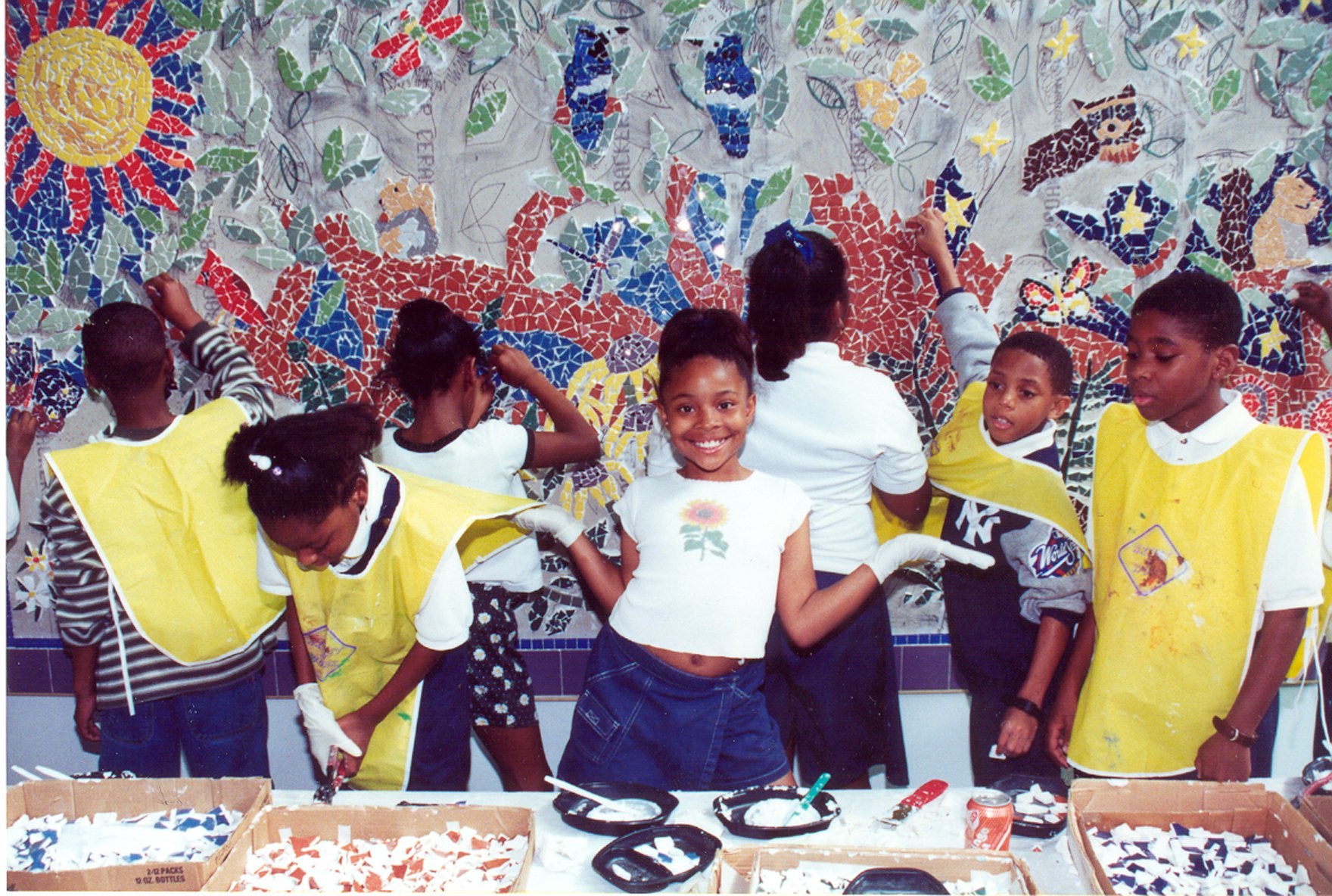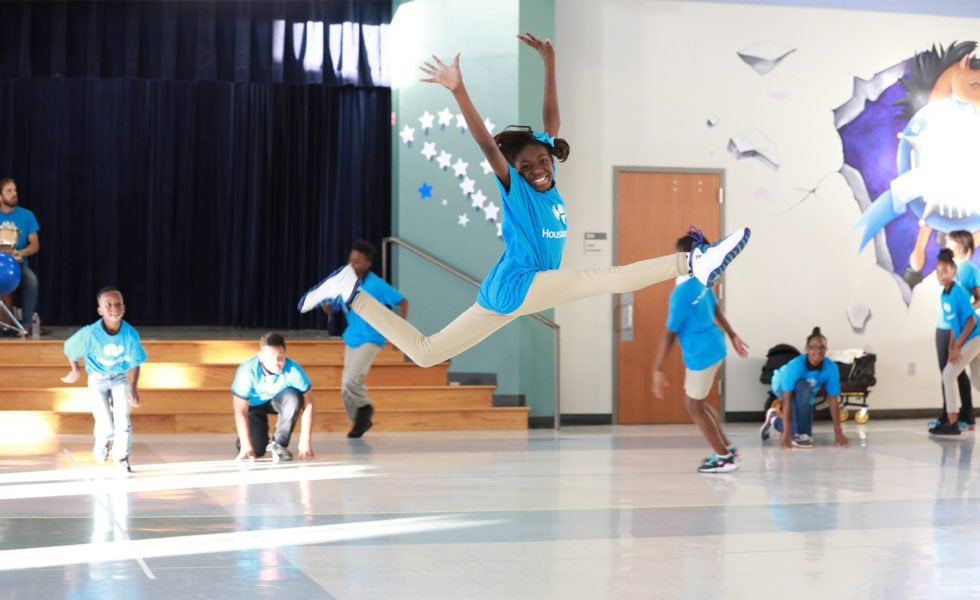“My theme today is adaptation,” said Bahia Ramos, Wallace’s director of the arts, on a recent webinar hosted by Grantmakers in the Arts (GIA). “By that I mean a special kind of change. A change that makes a practice better suited to its environment.”
This environment, of course, is the one we are now six months into, where the COVID-19 pandemic, economic insecurity and uprisings for racial justice have transformed life in this country. For the students and teachers in arts learning programs, this has meant a total pivot, everything from transitioning to online learning and virtual convenings to teaching artists being laid off at extremely high rates. These changes and much more came up in the GIA webinar, where Ramos spoke along with Kimberly Olsen, executive director of NYC Arts in Education Roundtable and Alex Nock, principal of Penn Hill Group.
Adaptation at BGCA
Back in 2014, Wallace and three Boys & Girls Clubs of America (BGCA) in the Midwest embarked upon the Youth Arts Initiative to discover if 10 principles drawn from the nation’s best, specialty afterschool arts programs could be applied within a general youth-serving organization better known for its sports programs. No one knew if it would work, but over the five years of the initiative, the clubs did manage to successfully implement high-quality art skill-development programs as defined by the Ten Principles for Success. Additionally, the retention rates for young people in the initiative was twice that of young people who were not in the program.
YAI is now in its second wave in five cities, testing whether the Ten Principles can be adapted to a lower-cost model. Clubs designed several new strategies, such as hiring assistants for teaching artists and focusing on lower-cost art forms, and initial results were promising.
Then COVID-19 changed everything.
“COVID-19 has had a devastating impact on arts and culture and the education system at large,” Kimberly Olsen said in her presentation. According to Olsen, drastic budget cuts due to the pandemic have fallen disproportionately on arts education, impacting cultural organizations, their ability to serve students and also trickling down to their teaching artists.
The Impact on Teaching Artists
“Before the pandemic we knew that teaching artists were at risk,” Olsen said. According to a recent DataArts survey, teaching artists have been laid off at high rates, with a 78% decrease in artist staffing at NYC-based organizations as of May 8; of the 5,000 teaching artists who responded to the survey, 96% have experienced a loss of income.
Amazingly, Ramos said, four of the five BGCA clubs have managed to keep all of their teaching artist staff. “We continued our funding of teaching artists and programs in our clubs regardless of whether they were opened or closed,” she explained. This enabled BGCA to launch a new program called “Creates” with a special website and tips on maximizing limited budgets, arts projects and program assessment.
Sadly, not all organizations have been as lucky. According to the same survey by SMU DataArts referenced above, over 25% of organizations stated that they have laid off or furloughed their staff and artist workforce, and 11% of organizations indicated that they do not think they will survive the COVID-19 crisis.
“Our city announced a draft budget that saw tremendous cuts to arts education funding that would not only jeopardize the city’s recovery process, but limit both school and cultural organizations’ capacity to serve and engage young people while disproportionately impacting these nonprofit cultural organizations as well as students from low income communities,” Olsen explained.
As a result, the NYC Arts in Education Roundtable launched an efficacy campaign called Arts Are Essential, with the goal of preserving arts education funding and investing in the community. “With all of this in mind, it means that organizations must be flexible,” Olsen said. “Flexibility means survival.”
Early lessons are emerging from BGCA’s new program as well. “Some downsides are clear – going online caused attention spans to be shorter, hours had to be reduced, fewer youth are joining, and as with regular school, lack of technology is a problem for some,” Ramos explained. “But there are some unexpected upsides like new opportunities to engage with parents; older youth have come in providing leadership roles, and youth are reporting that they feel more emotionally safe doing work at home.”
Heading Toward Recovery
According to Olsen, the arts and culture sector and teaching artists are going to play a huge part in the recovery of schools and communities. So how can philanthropy support artists who have been hit the hardest?
Given the very real threats to teaching artists and to arts learning programs overall, the NYC Arts in Education Roundtable encourages philanthropy to take the following action steps:
- Include teaching artists in conversations and decision-making processes as the arts sector is redefined
- Invest resources in emergency funding to grant immediate direct-to-individual support for teaching artists to offset the disproportional financial impact
- Ensure that funding language and programs include teaching artists
- Examine longstanding siloed funding priorities
- Ensure arts organizations that are being funded compensate teaching artists with fair wages
Penn Hill Group’s Alex Nock added another way for organizations to take advantage of potential funding: The Coronavirus Aid, Relief and Economic Security (CARES) Act. Its provisions include more than $30 billion for K-12 and higher education programs; more than $4 billion for early childhood education; and other supports such as forgivable loans to nonprofits, including many providers of afterschool or summer programs. It also expanded states’ ability to provide Pandemic Unemployment Assistance, including for gig economy workers and individuals like artists, who would not ordinarily be eligible.
Nock spoke about other important pieces of COVID relief that affect artists and the art world in general. The Families First Coronavirus Response Act provided flexibility and additional funding for state unemployment insurance agencies to respond to COVID-19. The Paycheck Protection Program and Health Care Enhancement Act provided $319 billion to replenish the program created under the CARES Act, in which loans to small businesses and nonprofits may be forgiven if businesses maintain their payroll.
Looking ahead to next year, Nock said that the House had passed the majority of its 2021 appropriations bills in two packages, which included moderate increases, but said we can expect the appropriations to be wrapped up after the November election. He is hopeful that the next package of COVID federal funding will include more money for education.
Whatever happens with the funding going forward, Olsen emphasized that collaboration, flexibility and adaptation will help the sector survive and thrive. “While it’s been a hard time for the arts in education community, the field is resilient,” she said. “They’re creative, and they are driven to support their students in whatever way they can. We’re seeing opportunities and potential growing each day.”




